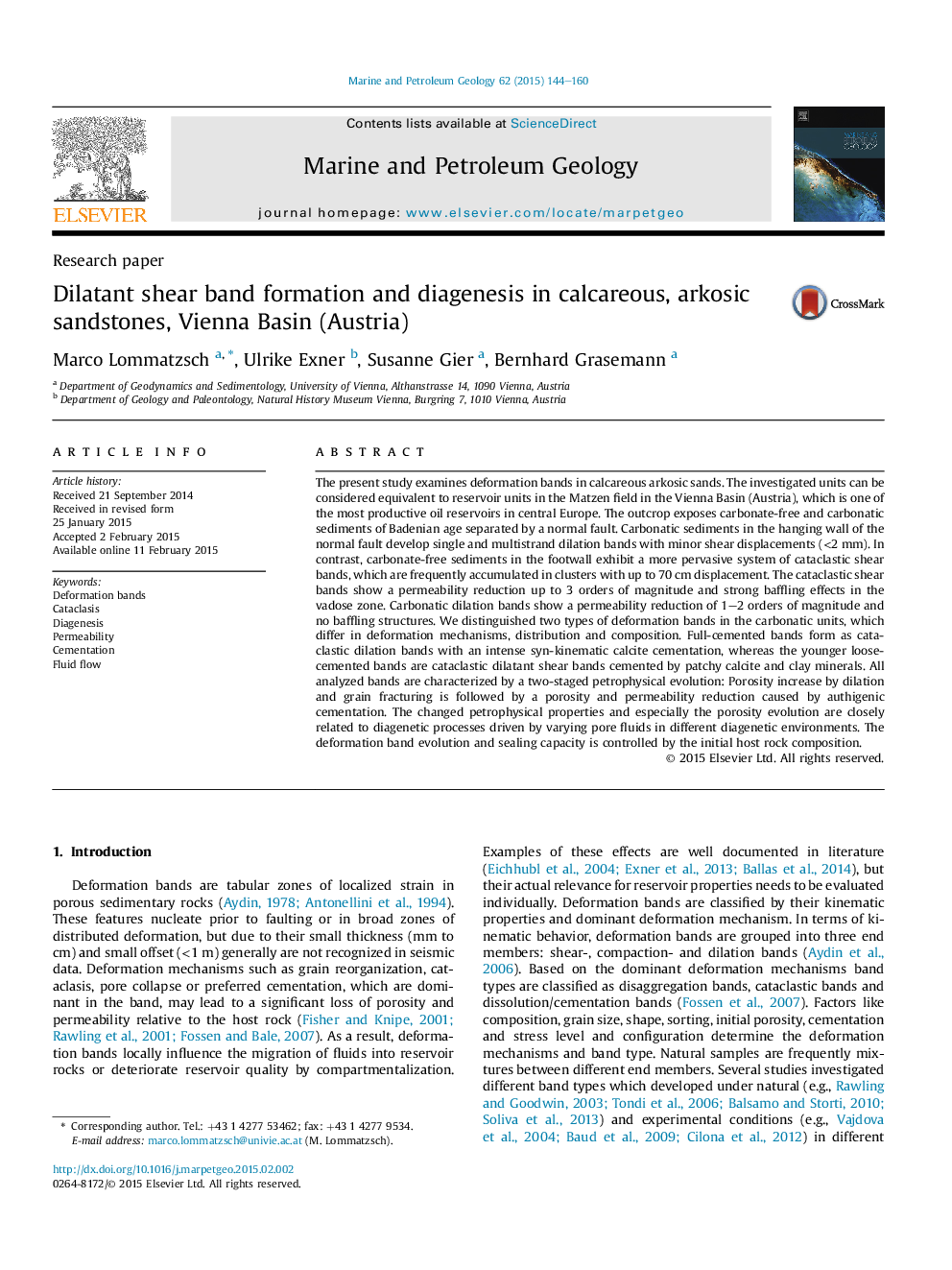| کد مقاله | کد نشریه | سال انتشار | مقاله انگلیسی | نسخه تمام متن |
|---|---|---|---|---|
| 4695566 | 1637163 | 2015 | 17 صفحه PDF | دانلود رایگان |
• Dilatant shear band formation and diagenesis in porous calcareous arkoses.
• Porosity and permeability reduction caused by grain fracturing and cementation.
• Deformation band evolution and sealing capacity is controlled by the host rock composition.
The present study examines deformation bands in calcareous arkosic sands. The investigated units can be considered equivalent to reservoir units in the Matzen field in the Vienna Basin (Austria), which is one of the most productive oil reservoirs in central Europe. The outcrop exposes carbonate-free and carbonatic sediments of Badenian age separated by a normal fault. Carbonatic sediments in the hanging wall of the normal fault develop single and multistrand dilation bands with minor shear displacements (<2 mm). In contrast, carbonate-free sediments in the footwall exhibit a more pervasive system of cataclastic shear bands, which are frequently accumulated in clusters with up to 70 cm displacement. The cataclastic shear bands show a permeability reduction up to 3 orders of magnitude and strong baffling effects in the vadose zone. Carbonatic dilation bands show a permeability reduction of 1–2 orders of magnitude and no baffling structures. We distinguished two types of deformation bands in the carbonatic units, which differ in deformation mechanisms, distribution and composition. Full-cemented bands form as cataclastic dilation bands with an intense syn-kinematic calcite cementation, whereas the younger loose-cemented bands are cataclastic dilatant shear bands cemented by patchy calcite and clay minerals. All analyzed bands are characterized by a two-staged petrophysical evolution: Porosity increase by dilation and grain fracturing is followed by a porosity and permeability reduction caused by authigenic cementation. The changed petrophysical properties and especially the porosity evolution are closely related to diagenetic processes driven by varying pore fluids in different diagenetic environments. The deformation band evolution and sealing capacity is controlled by the initial host rock composition.
Journal: Marine and Petroleum Geology - Volume 62, April 2015, Pages 144–160
